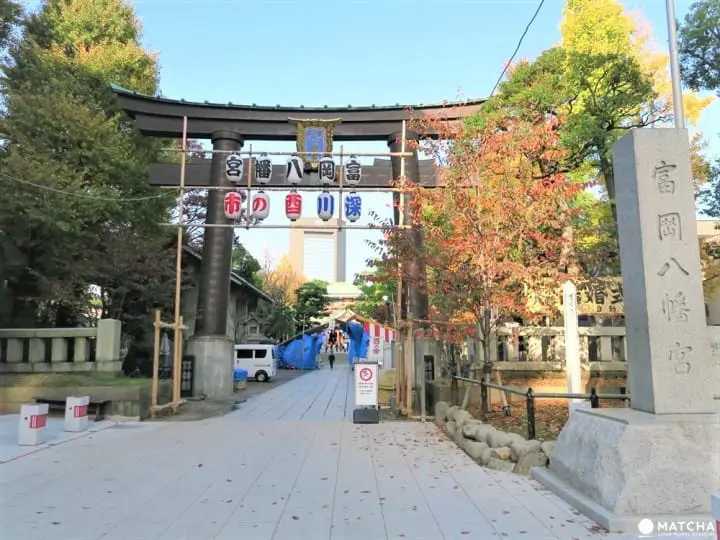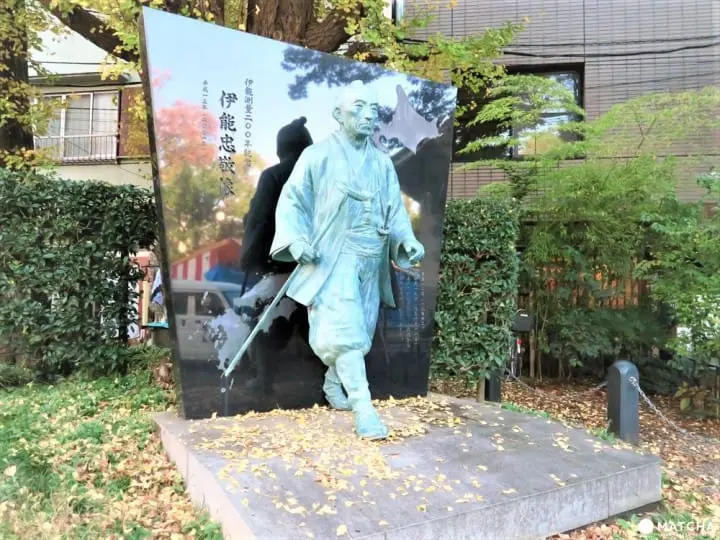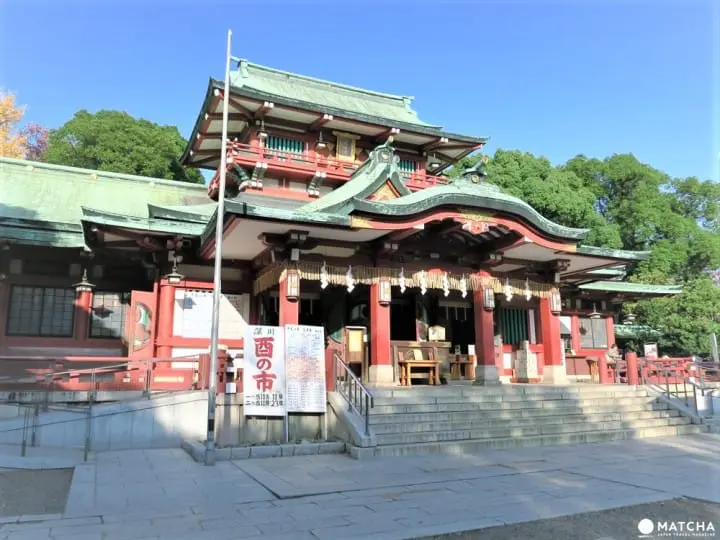Tomioka Hachimangu: The Origins Of Sumo Wrestling

A place that samurai worshiped, there are 44,000 Hachimangu Shrines in Japan, with 40 alone in Tokyo. We'll introduce you to the largest one, Tomioka Hachimangu.
Throughout Japan you will find a great number of Hachimangu shrines, 44,000 in fact, with 40 located in Tokyo. These shrines are dedicated to the god of battle, Yawata no Kami, who was revered by the samurai.
Tomioka Hachimangu in the Koto ward of Tokyo is one of these Hachimangu shrines. Built in 1624, it's a shrine with a long history. At the time it was built, it used over 20,000 meters squared of land and was the largest Hachimangu in Edo, the former name of Tokyo. Even today, you can still feel the Edo era and old town atmosphere within the grounds of Tomioka Hahimangu Shrine. Today let's look at Tomioka Hachimangu and the sights around it.
A History Rich Spot Just Beyond the Torii

The main path to Tomioka Hachimangu is a large street called Eidai-dori, which stretches from east to west. On weekends, the sides of the streets are lined with food stands.

There is a statue of Inou Tadataka located right inside the shrine gate. He was a surveyor during the Edo Period and was the first person to walk through all of Japan, completing the first full map of the nation. The precision of this map is such that it is not very different from maps made today. Even those raised using GPS are surprised at the skill displayed in this map.

Next to this statue is a storage area known as the shinyoko, where two o-mikoshi are kept. Every year on August 15th, the Fukugawa Hachiman Festival is held. These miniature portable shrines, decorated with gold, silver, and diamonds are brought out and used during the festival.
For most of the year, they are displayed within this storage area, but can be viewed through the windows.
The Vermillion Pillars of the Inner Shrine Leave an Impression

As you walk up the stairs from the main street, you'll see a vermillion building appear. This is Tomioka Hachimangu's front and main shrine. The prayers methods used here are the same as at any shrine: make your offering, bow twice, clap your hands twice, pray silently, then bow once more at the end.
Visit the Japanese Gardens and Subsidiary Shrines in the Torii

On the east side of the main shrine is a Benten pond; a beautiful Japanese garden with a vermillion bridge going over the charming pond.

Within the grounds are seventeen subsidiary shrines that accompany the main shrine. The God of Sewing, The God of Comedy, The God of Harvest, The God Of Business, and various other gods are enshrined here.

There are even some paths with fifteen torii lined up in a row to pass under before you reach the actual subsidiary shrine itself.
Edo Sumo Wrestling Originated from this Land

Kanjinzumo (*1) held at Tomioka Hachimangu Shrine is believed to be the originator of sumo in the Edo era.
*1 Kanjinzumo: Sumo wrestling performances performed after taking money from the audience. At the time, it was used as a means to fund the repair costs of Shinto shrines and Buddhist temples.

Sumo wrestling was banned at one point because it was said to corrupt the public's morals, but in 1684 the Edo Bakufu government gave Tomioka Hachimangu Shrine permission to hold sumo wrestling events. After that, sumo wrestling events were held in the shrine grounds in the spring and fall.
Taking this into account, there is a monument within the shrine grounds where the names of the Yokozuna throughout history are engraved. The Yokozuna is the top position in sumo wrestling.

On the main street is a monument for the Oozeki, who are the wrestlers that achieve the second highest ranking in sumo. You can learn more about the terms and history of sumo in Tips For Watching Sumo In Tokyo - Key Terms, Tickets And Schedule.

The eastern area of the shrine called Kiba, 'ki' meaning wood and 'ba' means space. This is the location where wooden building materials were kept during the Edo era, and is memorialized in an engraved monument showing workers of the time transporting these materials.

On the west side of the road is an unusual chozusho, a standard feature of all shrines where people must rinse their hands and mouth. At Tomioka Hachimangu, it's also called a temizudokoro. This chozusho is unique in that it is a giant stone that was brought to Tokyo from Ehime prefecture in Shikoku.
For how to use a common chozusho, take a look at How To Visit A Japanese Shrine.
In Conclusion

What did you think of the atmosphere at Tomioka Hachimangu? Did you like the Edo era, old town feel to it? It's a shrine that's been worshipped by the locals since long ago, but recently it's become more lively as more and more travelers pay their respects in the shrine grounds.

If you come to this old town area, please stop by Tomioka Hachimangu to offer your own prayers.
Hotels near Tomioka Hachimangu
If you want to know more about Fukugawa Fudo, which is right next to Tomioka Hachimangu, then take a look at Sutra Training at Fukagawa Fudo-do. Please also take a look at Fukagawa Edo Museum: Edo Fans Must Visit!, which introduce you to sightseeing spots within walking distance as well.
新潟生まれ。事業会社でのマーケティングを経験後、2011年からシンガポールへ移住し、出版社や制作会社で編集に従事。2015年に日本へ帰国しMATCHAのライターに。国内外を旅行する中で見つけた新しい発見を、多くの人とシェアしていきたいです。














































![[Coupon Available] Attention Overseas Winter Sports Fans! Nagano's Sports Depot Has Evolved](https://resources.matcha-jp.com/resize/720x2000/2026/01/05-254819.webp)
![[2 hours from Tokyo ] 10 Quiet and Breathtaking Views of Mount Fuji in Yamanashi Hokuto City , Yamanashi - Part 2](https://resources.matcha-jp.com/resize/720x2000/2025/12/16-253037.webp)
